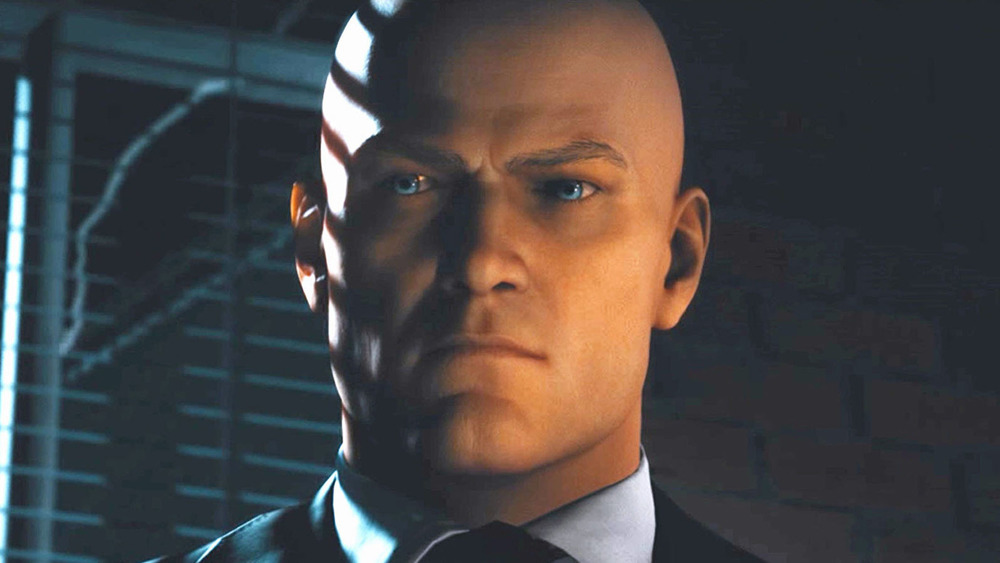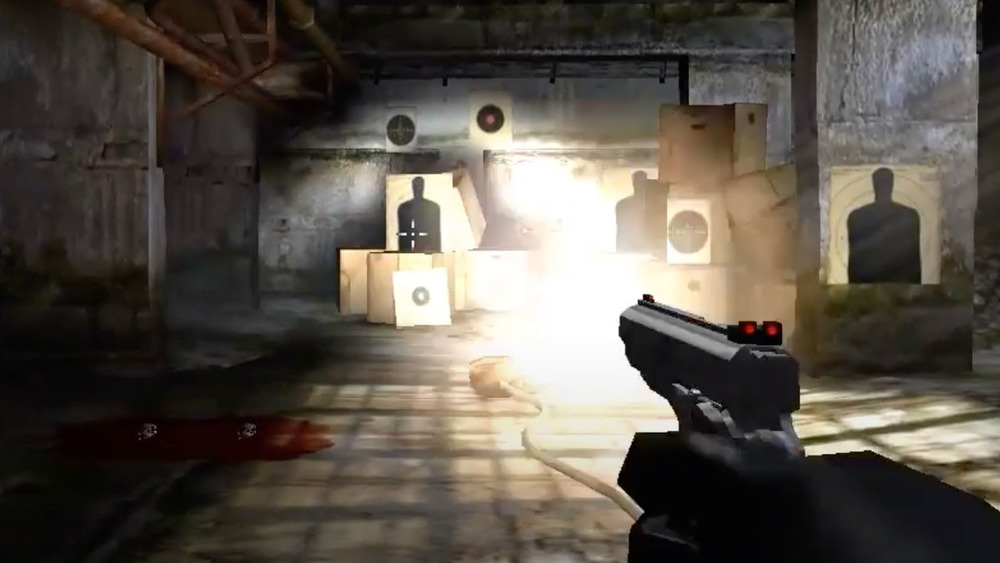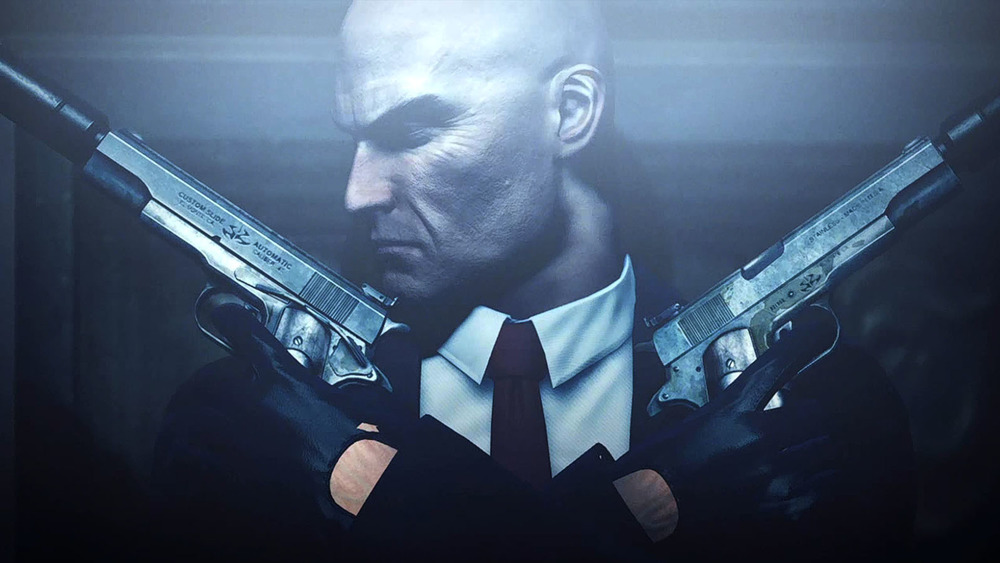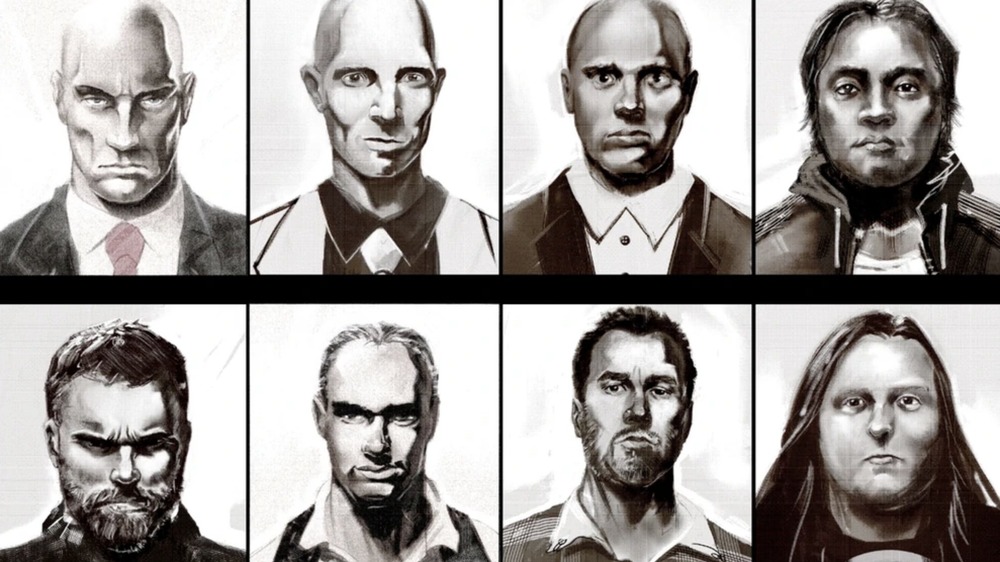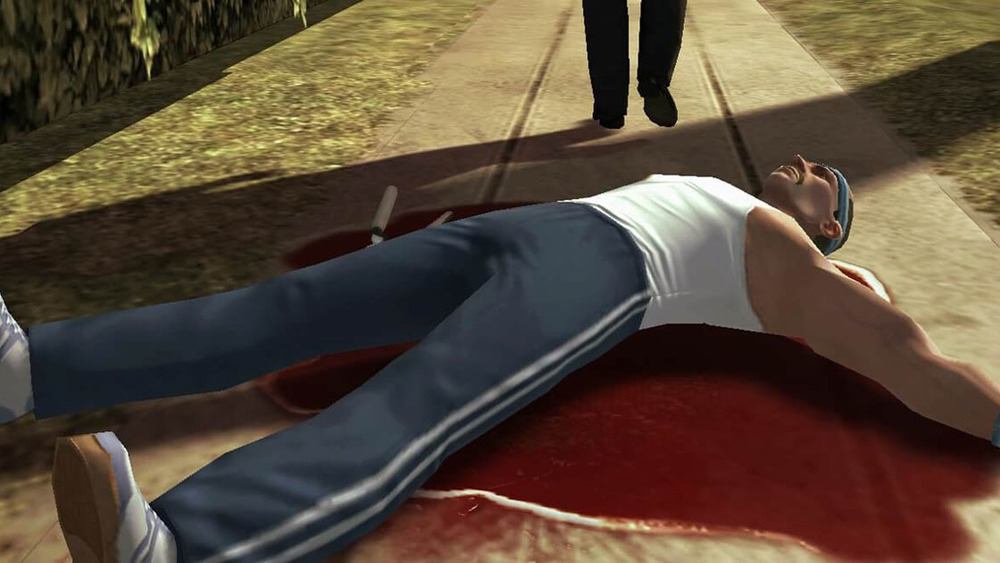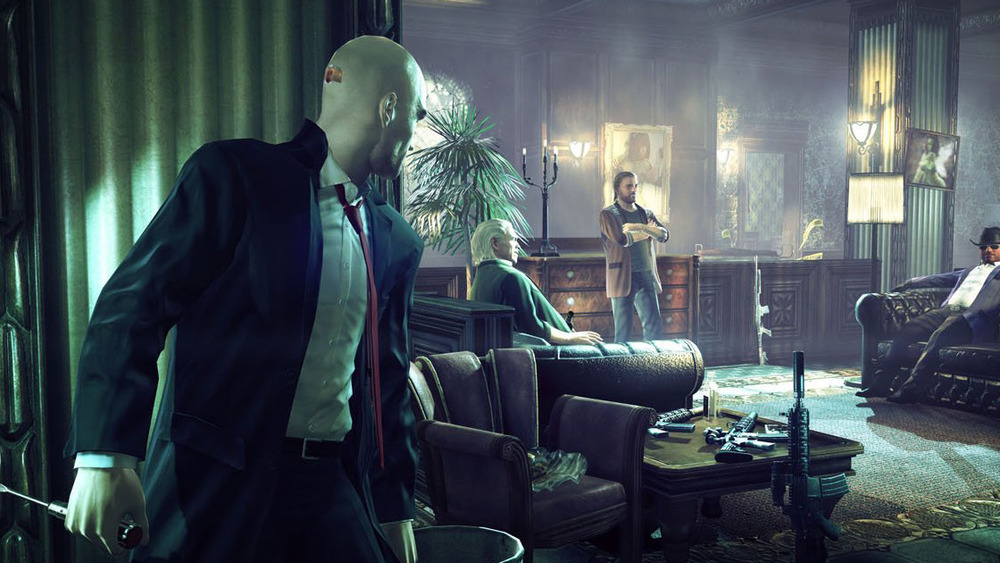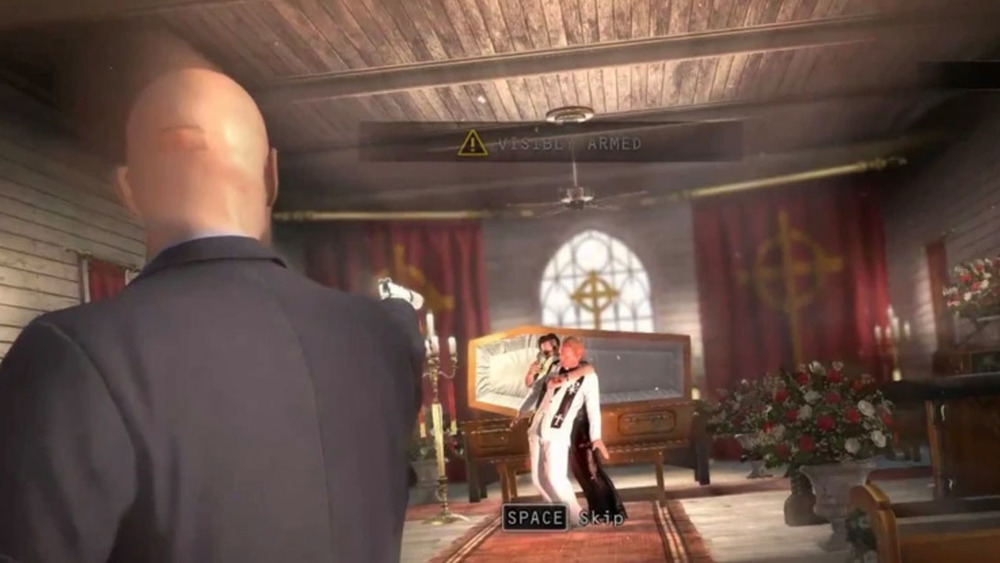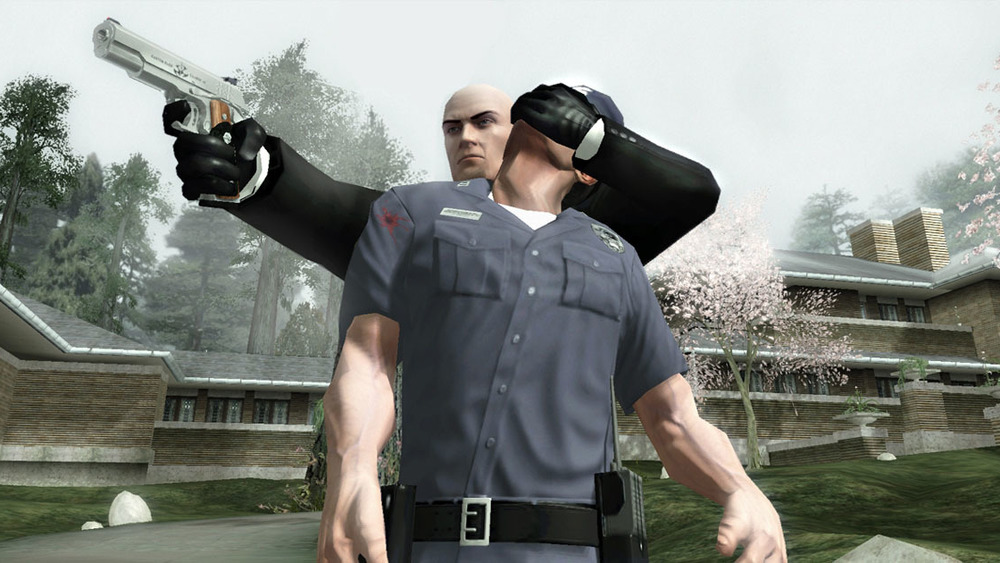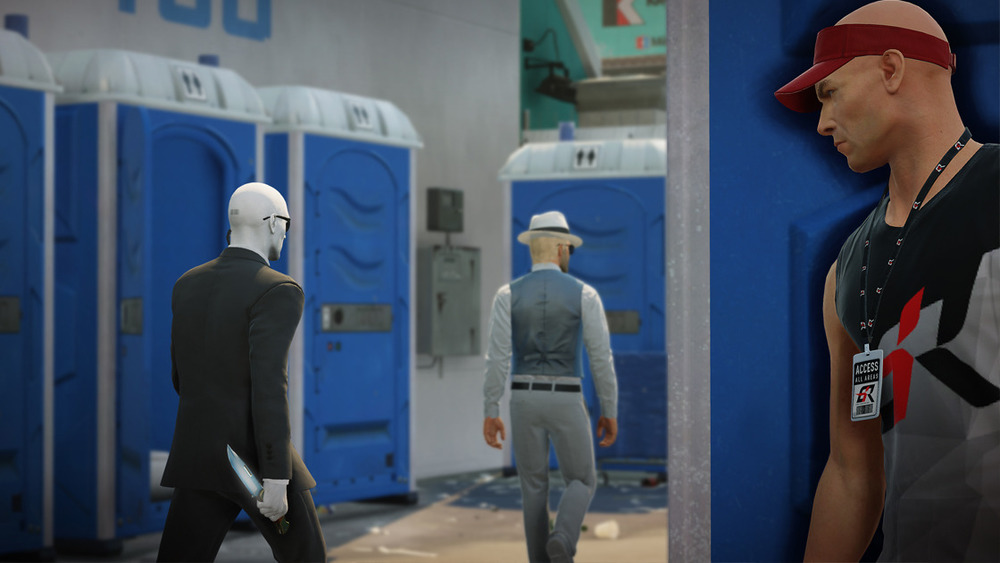Hitman Features You Never Knew Were Cut
When Hitman 3 launched in January 2021, it became the eighth overall full game in a Hitman franchise that began way back in 2000. Everyone's favorite bald, barcoded assassin, Agent 47, has racked up an impressive body count in that time. One estimate had 47's kill count at 348, not including Hitman 3. One reason why fans keep coming back for more stealthy mayhem is because publisher and developer IO Interactive hasn't changed the core of the games too much. Players still take 47 to a series of glitzy locales, where he can don disguises in order to get close to his target, and then eliminate them in all kinds of ways.
But 21 years is an eon in the video game industry, and the Hitman franchise has spanned multiple console generations and multiple shifts in gamers' taste. IO has tweaked the formula over the years, sometimes in major ways. But it's also made many changes that even devoted players might not have noticed.
Here are all the less obvious but still important features cut from the Hitman franchise.
First-person mode
Hitman games have always been primarily third-person, and although they could be classified as action games depending on the player's preferences, they've always emphasized stealth over shooting as well. Even so, earlier games in the series offered an optional first-person mode that would be more at home in a first-person shooter. The feature first appeared in Hitman 2: Silent Assassin in 2002, continued with Hitman: Contracts the following year. Hitman: Blood Money was the last title to feature it in 2006 before Hitman: Absolution did away with it in 2012.
Most players probably never bothered with first-person in the first place, because the series penalizes running-and-gunning so harshly. But a handful of players did enjoy Hitman in first-person, perhaps feeling it was more immersive. Devotees of first-person Hitman did get some good news when Hitman 3 was made available for VR headsets. If you don't have a VR headset, a PC mod also offers first-person mode for Hitman 3 and some of the content from Hitman 2.
Dual-wielding
For older Hitman players, Agent 47 isn't Agent 47 without his trademark twin silverballer pistols. Agent 47 could use two pistols at the same time from the very first game onwards, and dual-wielding remained unchanged until Hitman: Absolution. Prior to that title, picking up a gun that 47 already had in his inventory would lock him into dual-wielding for the rest of the level. Absolution allowed him to switch between either solo or dual mode, and changed dual-wielding so that 47 fired alternating shots. In earlier games, he fired both guns simultaneously, which burned through ammo much quicker.
But dual-wielding vanished in Hitman 1 in 2016 and hasn't been available since, even though some players wanted it to return. Dual-wielding was always one of the more aggressive actions 47 could perform, so maybe its omission makes sense — it was always a bit at odds with the game's overall emphasis on stealth. Dual-wielding did have some strategic usefulness, as it allowed 47 to quickly clear multiple enemies out of a room. But plenty of submachine guns, assault rifles, and shotguns let 47 do the same thing.
Notoriety system
The Hitman games have always given the player the freedom to be as stealthy or as aggressive as they want. But playing stealthy is clearly the way the games are intended to be played, because players are typically rewarded for being sneaky and are punished for aggression. But the specific rewards and punishments have changed over the years. Hitman: Blood Money, for example, tried out a notoriety system. This was an amped-up penalty system that penalized aggressive players across multiple levels in the game.
In practice, any time 47 was caught committing an illegal act and failed to get rid of the evidence — by either disposing of a witness or destroying security camera footage — it would raise his "notoriety score." With that in play, NPCs in future levels would be more likely to be suspicious of 47, which made it more difficult for him to blend in. The only way to lower his notoriety score was to bribe witnesses or cops. The game even added fake news reports and police sketches that would change depending on what happened in each mission.
Fortunately or unfortunately — depending on whether you liked it or not — IO removed the notoriety system for Hitman: Absolution. In future games, anything that happened in a level stayed in that level.
Discoverable blood stains
A game about a cloned assassin was never going to be realistic, and Hitman games haven't ever been about realism. Longtime Hitman players have come to find the unrealistic parts of the Hitman franchise to be some of its best features. A glaring example of the series' lack of realism is how it handles blood stains. As an assassin, 47 occasionally leaves a bloody mess. But in the majority of Hitman games, NPCs would treat blood stains like they were invisible.
However, two games in the series handled blood stains a bit differently. Hitman: Blood Money was the first game in the series that made blood stains discoverable, and Hitman: Absolution continued the trend. In both of those games, whenever an NPC discovered a blood stain, the guards would go on high alert. Even if 47 disposed of a body unseen, guards could still follow the blood trails to locate it.
It definitely made the games more challenging. From the launch of Hitman 1 onward, though, it's been left out.
Checkpoint-based saves
Saving in Hitman games has always been pretty straightforward after Hitman: Codename 47, which had no save feature. The next three games – Hitman 2: Silent Assassin, Hitman: Contracts, and Hitman: Blood Money – used a manual save system, with different numbers of saves available per level according to the difficulty setting. But on the hardest difficulty level, players still couldn't save.
In 2012, Hitman: Absolution shook things up and moved to a checkpoint-based save system. Instead of being able to save wherever they wanted, now the player had to progress to specific areas in a level to preserve their progress. That was yet another way Hitman: Absolution limited the player's freedom, along with those linear levels.
Manual saves returned for Hitman 1 in 2016 and they've been available ever since. But IO Interactive did show a little mercy to players on the hardest difficulty level. On Master difficulty, players are now allowed one save per level on instead of zero.
Point Shooting
Many Hitman fans consider Absolution the worst game in the series, and it's because iO Interactive made too many tweaks to the tried-and-true Hitman formula. Point Shooting was an Absolution-only feature, and while it looked cool, it felt out of place in a Hitman game.
The Point Shooting system was similar to the "Deadeye" feature from Red Dead Redemption 1 and 2. Agent 47 could tag multiple targets and shoot them all in quick succession. But Point Shooting also quickly drained 47's Instinct meter. Instinct was another Absolution innovation that let 47 see through walls and differentiated between hostile NPCs and civilians.
As cinematic as Point Shooting may have been, it just wasn't 47's style. Like most Hitman games, Absolution rewarded the player with a "Silent Assassin" rating for completing a level while only killing the designated target (or targets). Any time the player used Point Shooting on anyone other than the target, it was guaranteed to ruin a Silent Assassin run.
Point Shooting was gone from Hitman 1 onwards. But a streamlined version of the Instinct system did return for the World of Assassination trilogy, this time without limits on its use. Not every new feature from Absolution was a dud.
Taking human shields
Hitman: Blood Money and Hitman: Absolution both gave 47 the not-very-subtle option to take a human shield. In both games, if 47 approached an unsuspecting enemy from behind, he could grab them around the neck and use them as cover while facing off against any other hostiles in the area. For Blood Money, it was the closest thing the game had to a cover system. Absolution added a full cover system, and also made the human shield mechanic less effective. In Absolution, enemies would eventually ignore the human shield and start shooting.
IO Interactive considered bringing back human shields for Hitman 1, and they made it as far as the Alpha version of the game before IO scrapped it. Many longtime Hitman players found the human shield's removal disappointing. Some speculated that IO removed it because taking human shields encourages combat. But Hitman also continued using the cover system, making human shields a bit redundant.
Ghost Mode
The World of Assassination trilogy added a host of new features to the Hitman franchise, and many of them were designed to grow Hitman's robust online community. The "Contracts" mode is one popular feature present in Hitman 1. It allows players to create custom assassination contracts on any NPCs in any levels from the most recent trilogy, and then challenge their friends to complete them the exact same way. It's yet another reason for players to keep coming back to the same levels over and over again.
"Ghost Mode" is another competitive multiplayer feature — one added to Hitman 2. This feature lets players challenge their friends to beat each other's times in completing missions. One player can complete a level as fast as possible, which creates a "ghost" of 47 that can be imported into another player's game. The second player then races against Ghost 47 to try to beat the time.
Sadly, Ghost Mode didn't make the cut for Hitman 3. Most likely it just didn't catch on like Contracts Mode did.

